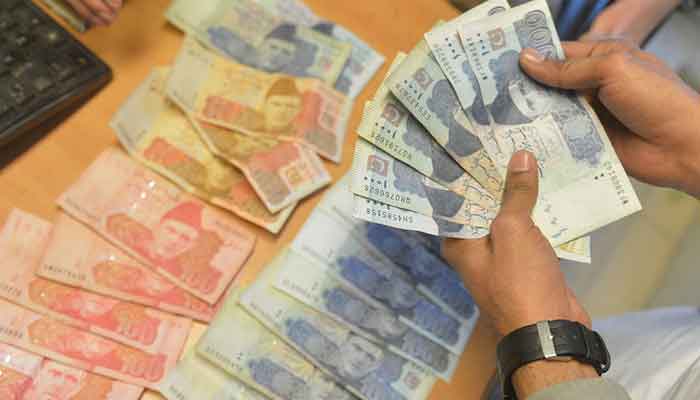- Govt serious about taking prior actions to sign SLA.
- Rupee gains 2.18% against dollar this week.
- Market remains hopeful that IMF agreement will proceed.
KARACHI: The rupee is expected to start its recovery drive against the US dollar as the government’s efforts to secure the International Monetary Fund’s (IMF) bailout programme has boosted the market’s positive sentiments and due to an increase in dollar supply, The News reported Sunday citing traders and analysts.
The government seems serious about taking some prior actions that could help meet the IMF conditions to seal the state-level agreement with the global lender.
During the outgoing week, the local currency gained about 2.18% against the greenback in the interbank market, raising from 275.30 on Monday to 269.28 on Friday.
Although no agreement to unlock the funds from a $6.5 billion bailout was achieved between Islamabad and the IMF during the fund’s 10-day visit, both parties concurred to continue long negotiations because the South Asian nation’s worsening economic crisis does not appear to have a quick resolution.
Pakistan must come to an agreement with the IMF for further money to secure more aid, avoid default, and rebuild foreign currency reserves that have decreased to $2.9 billion.
The stock market embarked on a selling binge, but there was no reaction to both sides’ failure to reach a staff-level accord. It increases the IMF timeframe by at least another 10–12 days and, given the rate at which reserves are depleting, constitutes a serious concern.
Despite a setback, the market remains hopeful that the IMF agreement will proceed, particularly given the several harsh “prior actions” Pakistan has already done.
“As the IMF needs to see some progress on the terms, the staff-level agreement (SLA) is still not in place. In about a week, the SLA might be signed and then sent to the IMF board for final approval. Overall, progress that is good,” said a currency dealer.
A positive effect is happening in the currency market by the exporters, due to dual movement in the currency, who are realising export proceeds, and providing much-needed liquidity in the market, according to Tresmark’s client note.
“For the first time in many months, the market also witnessed material selling in the forward tenors by exporters. In the grey market the last quote was 280/282 and there is some panic there as well as speculators want to book their profits and exit the market,” it said.
There was still a substantial backlog of imports and payments, which would exceed any inflow of export proceeds. But in the medium term, and given that the IMF agreement would go ahead with follow-up from friendly countries and multilateral institutions, demand might go to take a huge hit, it added.
“With that, entities involved in the export business will see a boom where as those in the import business will witness a bust. In the short term the market may stay above the 270/$ level, but may fall back to 262/$ level in the medium term,” the client note stated.

 Latest News14 hours ago
Latest News14 hours ago
 Latest News13 hours ago
Latest News13 hours ago
 Latest News13 hours ago
Latest News13 hours ago
 Latest News13 hours ago
Latest News13 hours ago
 Latest News13 hours ago
Latest News13 hours ago
 Latest News13 hours ago
Latest News13 hours ago
 Business14 hours ago
Business14 hours ago
 Business14 hours ago
Business14 hours ago





















